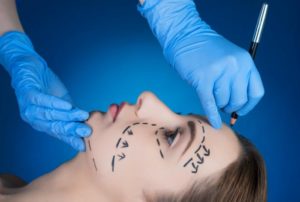Deep Plane vs SMAS Facelift: What’s the Difference and Which Is Right for You? Choosing the most suitable facelift technique for long-lasting, natural rejuvenation.
As facelift surgery evolves, patients are becoming more informed about the techniques available to address facial ageing. Among the most effective and widely discussed are the SMAS facelift and the more advanced deep plane facelift. Both aim to reposition sagging tissues, restore youthful contours, and create long-lasting results — but they differ significantly in depth, approach, and outcome.
This guide explains the key differences between SMAS and deep plane facelifts, who they’re best suited for, and what patients can expect in terms of results and recovery.
What Is the SMAS Facelift?
The SMAS facelift (Superficial Musculoaponeurotic System) targets the fibrous layer beneath the skin and above the facial muscles. This layer plays a critical role in facial expression and support. In a SMAS facelift:
- The skin is lifted
- The SMAS layer is tightened, folded, or repositioned
- Excess skin is removed
This technique improves midface sagging, nasolabial folds, and jawline definition while keeping the deeper facial muscles untouched.
Benefits of the SMAS Facelift:
- Natural-looking results when performed correctly
- Shorter operative time compared to deeper techniques
- Suitable for patients with mild-to-moderate signs of ageing
However, because the SMAS facelift does not release deep facial ligaments or address the midface as comprehensively, it may offer more limited rejuvenation in certain cases.
What Is the Deep Plane Facelift?
The deep plane facelift goes a step further by releasing and lifting the SMAS layer along with deeper retaining ligaments and facial fat pads. Instead of pulling on the skin or folding the SMAS, this technique elevates the entire facial unit as one natural structure — including the midface, nasolabial folds, and jowls.
In a deep plane lift:
- Skin and SMAS are lifted together as a composite flap
- Ligaments tethering the midface are released
- Facial volume is repositioned without creating tension
Advantages of the Deep Plane Facelift:
- More powerful lift of the cheeks and midface
- Greater longevity of results (often 10–15 years)
- Less skin tension and therefore fewer visible scars
- More natural, less “pulled” appearance
Because it involves deeper anatomical layers, the deep plane facelift requires advanced surgical expertise and a longer recovery time.
Which Technique Is Right for You?
The decision between a SMAS and deep plane facelift depends on multiple factors:
| Criteria | SMAS Facelift | Deep Plane Facelift |
|---|---|---|
| Ageing severity | Mild to moderate | Moderate to severe |
| Midface sagging | Limited improvement | Significant improvement |
| Longevity of results | 7–10 years | 10–15 years |
| Downtime | 10–14 days | 2–3 weeks |
| Scarring | Minimal | Minimal |
| Ideal patient | Younger patients or those needing refinement | Patients seeking a comprehensive, long-lasting result |
A consultation with a board-certified plastic surgeon is essential to assess facial anatomy, skin elasticity, and aesthetic goals before recommending the most appropriate technique.
Why Expertise Matters
The deep plane facelift demands exceptional anatomical knowledge and surgical precision. When performed by a qualified and experienced surgeon, both SMAS and deep plane lifts can deliver outstanding, natural-looking outcomes. However, improper execution — especially of deep plane techniques — carries increased risks, such as nerve injury or asymmetry.
Dr. Ali Soueid is a consultant plastic surgeon with dual training in reconstructive and aesthetic surgery, offering deep plane, SMAS, and hybrid facelift techniques tailored to each patient’s facial structure and goals. Surgical decisions are based on evidence, anatomy, and artistry — never a one-size-fits-all approach.
Learn more about facelift options or schedule a personalised consultation at www.cosmesticaestheticplasticsurgery.com.





